Hurricane Killer
-
4-Nov-2009
The Hurricane Killer is an array of small, controllable hurricanes that “eat the food” of possible large natural hurricanes, which will not occur due to lack of “food”.
The controllable hurricane is based on the Twistower, which is a cheap rotating thin walled cylinder that acts as a bound mini hurricane. Provided with helium or hydrogen filled inflatable ribs, it will float vertically and will suck the air from underneath the tower base. If the Twistower is placed above warm sea water, it will suck warm air, saturated with water damp. The damp condensates in the vortex core of the hurricane and leaves behind the latent heat. Due to the heat the air will rise as in a natural hurricane, which will drive vanes in the tower increasing the rotation speed. Therefore more air will be sucked. The sucking tower generates a depression above the sea, which will both increase the evaporation and cooling of the water.
The cold water will sink, which will cause a continuous circulation of warm evaporating water underneath the tower. This process causes a controllable mini hurricane, which will cool the sea and stabilize the atmosphere above the sea. The tower base is connected with a buoyancy anchored on the sea bottom. A wind turbine placed on the buoyancy generates power from the rising air and controls the power of the Hurricane Killer.
Possible water droplets on the tower wall will be removed through the hydrophobic wall, which is made of a porous fabric of high tension fibres.
Because the tower will also generate clouds, less sun will shine on the sea, which will cool the seawater as well. The cold water created by the tower will prevent the generation of large natural hurricanes.
Technical description
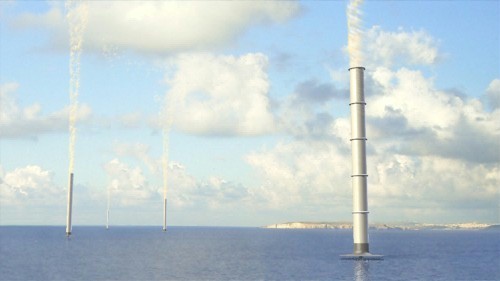
Figure 1: Barrier of an array of small, controllable Hurricane Killers
A cross section of the machine room of the Twistower as Hurricane Killer is presented in figure 2.
The tower is connected with a bearing on the top of an anchored buoyancy, floating on the sea surface. The bottom of the tower is provided with a nozzle, which acts as the inlet of warm humidified air, containing damp of evaporated sea water. Humidified warm air is lighter than the air outside the tower and will rise in the tower. The rising air in the tower will suck new warm humidified air in the tower, which will continue the air circulation. In the nozzle throat a wind turbine is placed at the top of the buoyancy beneath the tower bearing. The wind turbine will gain energy from the rising air.
If the circumstances are favourable the process will be started by the wind turbine in fan mode by filling the tower with warm humidified air. Once the circulation is started the turbine will change in energy mode.
A vane grid is mounted above the wind turbine, which will generate a vortex in the tower. Due to the vortex the tower will rotate as well. The tower sheet will be stabilized by the centrifugal force, which will avoid the implosion of the tower sheet by the under-pressure of the rising air inside the vortex.
The sea water temperature should be higher than 25 ºC and the atmosphere should be unstable with a cold upper atmosphere for the tower to create a mini hurricane.
These conditions occur e.g. in the Caribbean before and during the hurricane season.
The energy available can be scaled from the large natural hurricanes, which have a typical power of 50 TW. A typical core diameter is 40 km and a typical height is 10 km, so the typical, specific power is 4 W/m³. For a 40 m diameter, 500 m high Twistower the power will be 2.5 MW. Because the vortex will not stop at the top of the tower, it will rise up higher. Due to the latent heat in the core it is expected that the vortex will sustain 10 to 20 times the tower height, therefore the power might be ten-fold to twenty-fold. With an efficiency of 40% the net power will be 10 MW to 20 MW.
Due to the tower sheet the vortex core cannot increase, which will maximize the hurricane and makes it controllable and stays at an acceptable size.
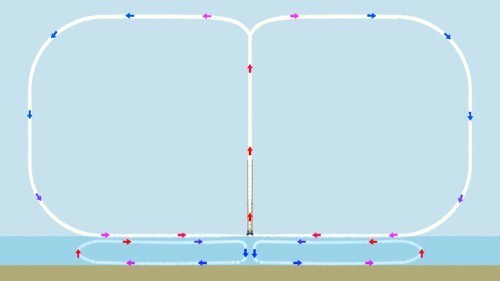
Figure 3: Water and air circulation of the Hurricane Killer
As can be seen in figure 3 the air inside the Hurricane Killer sustains a large circulation at a radius comparable with the vortex height resulting in about 15 km. At the top of the circulation, just as happens in a natural hurricane, the air will cool down by the cold air in the upper atmosphere. Down above the sea surface the air will heat up again by the warm water and gain damp of evaporating water.
At the other hand the water just below the sea surface will cool down by the air and by evaporation. The lowest temperature will be reached underneath the tower, where the dense cold water will sink. At the sea bottom the water will flow back, where it will be heated by the sun and the surrounded water. The warmer water will rise within the diameter of the air circulation, continuing a water circulation around the tower. Due to this process the water temperature is controlled and will not exceed the temperature needed to sustain a large natural hurricane. Therefore, if a large natural hurricane will pass, it will decrease in a tropical storm or less.
Global analysis
To maintain a hurricane the water temperature should be higher than 25 °C. For example saturated air of 27 °C has a density of 1.14 kg/m³. If this is sucked into the tower the density is lower than the density of the colder and drier air surrounding the tower of say 24 °C with a density of 1.185 kg/m³.
If initiated by the wind turbine in fan operation, with a tower height of 500 m this will maintain a pressure difference at tower base of Δp = g(ρ1 – ρo)h = 9.81(1.185 - 1.14) 500 = 220 Pa. To balance this pressure the tower sheet should rotate with ω = (3 Δp/ ρ1)½/r = 0.96 rad/s. Due to this rotation the pressure difference in the middle of the core will be higher, which will give some extra gain.
Without friction the velocity in the tower would be v = (2 Δp/ρ1) 0.5 = 19.6 m/s. With a 50 m diameter the friction is 18 Pa and negligible. Once initiated the vortex will rise to say 5000 m, which will increase the pressure difference in the vortex core. If globally assumed that the pressure difference with the surroundings is independent of the height, the pressure difference throughout the vortex height will be 2200 Pa and with friction 1160 Pa, so the rotation of the tower should increase to 1.8 rad/s. Without friction the air velocity in the tower will be 60 m/s and in equilibrium with the friction 42 m/s. With an efficiency of 40% the turbine power will be 40 MW, which is more than scaled before from a natural hurricane.
With a thickness of 0.2 mm the stress in the tower sheet is 110 MPa, which is quite low for a high tension fibre as carbon fibre.
The mass of the tower is 22 ton, thus 23000 m³ helium or hydrogen is needed, to make the tower float. If put in inflatable ribs with a 2 m diameter, 12 vertical ribs of 500 m and 10 horizontal circumferential rings all connected with the tower sheet, are needed.
These inflated ribs will also secure the tower shape. To minimize pressure losses, the rings are situated outside the tower and the columns inside the tower.
In principle inside and outside the tower, the tangential vortex speed is equal with the tangential speed of the tower.
The tangential velocity of the vortex, inside and outside the tower, is given in figure 4.

Figure 4: tangential velocity of the vortex inside and outside the tower
In the tower the vortex core is bound by the sheet. Above the tower the vortex will spread as in a natural tornado.
Applications
Outside the hurricane season and during extreme weather the tower will be deflated for protection by pumping helium or hydrogen out of the ribs into a chamber in the buoyancy. If a large natural hurricane approaches the sea water is already cooled down, thus the tower can be deflated in time to protect it.
An deflated array of Hurricane Killers is presented in figure 5.
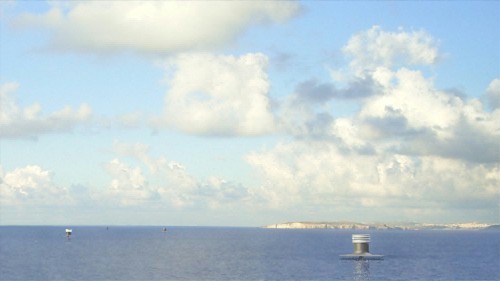
Figure 5: Deflated Hurricane Killers outside the hurricane season and during extreme weather
In figure 6 a barrier of Hurricane Killers is presented at a distance of 100 km in front of the Houston Gulf coast. The barrier is 200 km long and 100 km wide, to cool down an sea surface area of 20000 km², large enough to tame a large natural hurricane. Due to the large distance the towers are not visible from the coast.
Besides protection during hurricane season (September-November), the towers will produce 1.5 GW of electricity. They will also generate clouds and friendly rain.
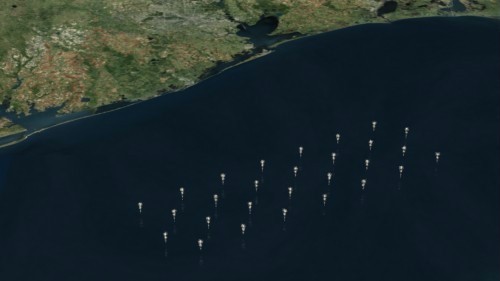
Figure 6: Aerial view of 200 km long barrier of Hurricane Killers 100 km from the Houston Gulf coast
Costs estimation
The costs of the Hurricane Killer are:

Costs of a 200 km barrier:
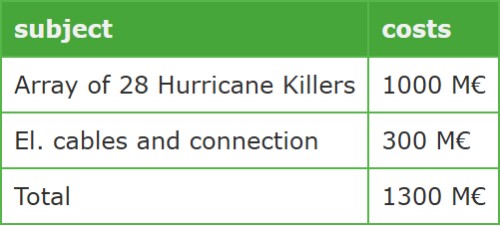
Yearly costs:
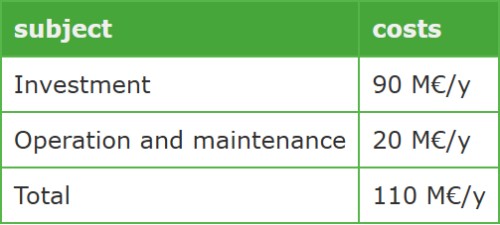
Production:
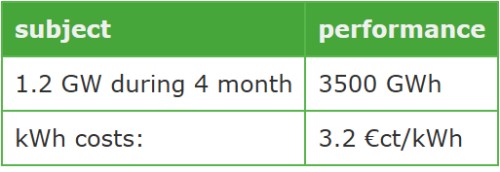
Conclusions
The Hurricane Killer provides:
- Electricity for a competitive price;
- Preventing hurricane damage >>100 M€/y;
- Clouds and friendly rain;
- CO2 savings
It is also possible to operate the Hurricane Killer without wind turbine, which will save a lot of investment costs. However, then the only cost savings are; preventing hurricane damage and creation of friendly rain.
It would be interesting to do further research on floatable rotating towers, which can produce energy and control extreme weather.
-
4-Nov-2009
